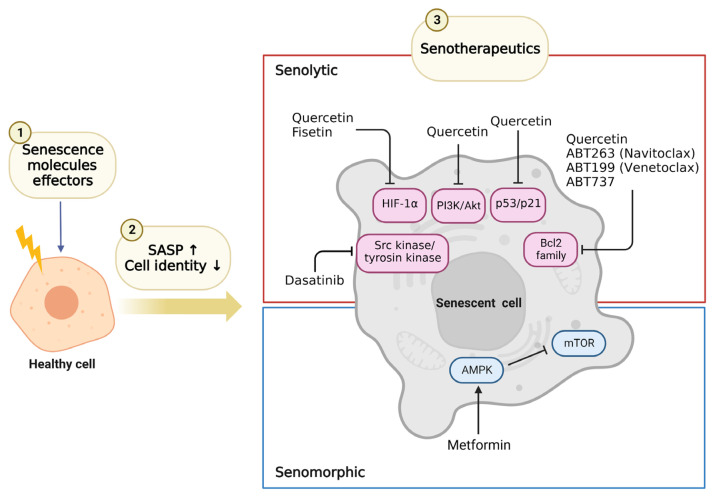Fig. 2.
Senotherapeutics used in diabetes and diabetes related diseases. Schematic representation of cellular senescence agents used and their target pathways. (1) Senescence molecules effectors, such as hyperglycemia and DNA damage, cause healthy cells to senesce; (2) Senescent cells secrete senescence-associated secretory phenotype (SASP) and lose their cell identity. (3) There are two types of senotherapeutics: senolytics, which eliminate senescent cells, and senomorphics, which inhibit SASP. The drugs in the figures have been used in mouse and human models of type 2 diabetes mellitus. Of these, dasatinib, quercetin, and fisetin have been used in clinical studies. Created in BioRender. HIF-1α, hypoxia-inducible factor 1α; PI3K, phosphoinositide 3-kinase; Bcl2, B-cell lymphoma 2; AMPK, AMP-activated protein kinase; mTOR, mammalian TORC1.

